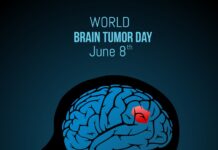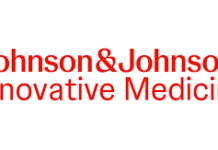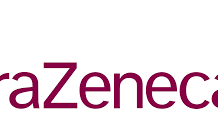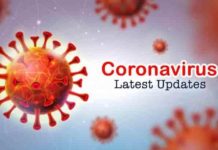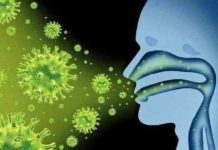Uploaded on: 22nd March 2020
Updated on: 06th April 2020
Notice:- This is an updated version of the article published in March 2020 and has been made open access in view of the COVID-19 pandemic
*Dr Tanu Singhal
Abstract
There is a new public health crisis threatening the world with the emergence of the novel coronavirus-19 or COVID-19 in Wuhan, China and its subsequent global spread. It is believed to have originated in bats and transmitted to humans through yet unknown intermediary animals. There have been more than 1 million cases and 50000 deaths till date (3/4/2020). The disease is transmitted through inhalation or contact with infected droplets and the usual incubation period is 5 days (range 2-14 days). The symptoms are mild in most people but 15-20% of patients (usually the elderly and those with comorbidities) may suffer from severe disease. The case fatality rate is estimated to range between 2-3%. Diagnosis is by specific molecular tests in respiratory samples. Treatment is essentially supportive. The role of antiviral agents (remdesiwir, lopinavir- ritonavir) and anti inflammatory agents (chloroquine, hydroxychloroquine, tocilizumab) is being explored. Prevention at the community level includes hand hygiene, cough etiquette, social distancing, travel restrictions and even lock downs. Strict infection control measures need to be instituted in hospitals to prevent spread to health care workers and other patients.
Introduction
We are in the midst of an unparalleled and serious public health crises (1). The emergence of the 2019 – Novel Corona Virus in China and subsequent spread all over the world is causing significant morbidity, mortality and damage to the world economy (2). At the time of writing this article (3/04/2020) more than 1 million cases and 50000 deaths have been reported globally (3). This article discusses what is currently known about the virus. Since new information about this virus is emerging on a daily basis, readers are requested to update themselves regularly. The disease has been named as COVID-19 (coronavirus disease 2019) by the WHO and SARS- CoV-2 by the International Committee on Taxonomy of viruses (4,5). The virus and the disease will be referred to as COVID-19 in this paper.
History
Coronaviruses are RNA viruses that commonly infect humans and animals. The name is derived from the Latin word “corona” or “crown” because of their crown like appearance of the virus under the electron microscope due to the glycoprotein spikes. Four strains of the coronavirus namely HKU1, NL63, 229E, OC43 have been in circulation in humans and cause 5-10% of respiratory infections in humans most of which are mild.
There have been episodes of crossover of corona viruses from animals to humans leading to severe disease in the past two decades. The first such episode happened in 2002 when the Severe Acute Respiratory Distress Syndrome (SARS) coronavirus of bat origin crossed over from the palm civets to humans in the Guangdong province of China. An estimated 8422 people mainly in China and Hongkong were infected with 916 deaths (mortality rate 11%) (6). One decade later in 2012, the Middle East Respiratory Syndrome Coronavirus (MERS-CoV) of bat origin and transmitted through camels emerged in Saudi Arabia and infected 2494 individuals with 858 deaths (mortality rate 34%) (7). Fortunately both these outbreaks were contained fairly quickly.
Origin and spread of the COVID-19 (8,9)
Adults with severe pneumonia of unknown etiology started presenting to hospitals in Wuhan the capital city of Hubei Province of China in the first week of December 2019. This event was picked up by the surveillance system (set up following the SARS outbreak). Most of the initial cases had a common exposure to the Huanan seafood market which was also trading live animals. On 31st December the World Health Organization was informed about the outbreak. On January 1 the sea food market was closed. Genome sequencing methods were used and on 7th January 2020, the etiology of this pneumonia was identified as a new corona virus with more than 95% homology with the bat coronavirus and 70% homology with SARS-CoV. The first death was reported on 11th Jan 2020. In the following weeks the number of cases increased exponentially in Wuhan, other cities of Hubei province and other provinces in China. Patients with no contact with the seafood market were also affected indicating that human to human transmission was occurring. Soon cases in other countries (Thailand, Singapore and South Korea) were reported. Then there were reports of health care workers treating the patients becoming infected. The massive migration of the Chinese on occasion of the Chinese New Year fuelled the spread of the virus. On 23rd January, Wuhan a city of around 11 million people was placed under lockdown with restriction of entry and exit into the city. Later other cities in Hubei province were also locked. Large scale gatherings and events were cancelled and entertainment hubs closed throughout China. While the response of the Chinese authorities was decisive, it was rather delayed. The epidemic was raging for more than a month by the time these measures were put in place. There was exit screening of people traveling out of China and screening of passengers who were arriving from China. Symptomatic patients were isolated and tested. Contacts of patients who had tested positive were also investigated. Transmission from asymptomatic patients and before onset of symptoms was also reported. On the 30th Of January the World Health Organization declared this outbreak as a Public Health Emergency of International Concern. As the epidemic progressed many countries including India started evacuating their citizens from the affected areas. The evacuees were quarantined upon arrival for 14 days and tested before de isolation.
With all these containment measures the number of new cases and deaths in China started reducing. February saw a trickling of cases in other countries but with few fatalities. However, March has witnessed a dramatic change in the epidemiology. There was a sudden increase in cases in South Korea, Italy and Iran followed by the USA, Spain, France, Germany and UK. The WHO declared COVID-19 as a pandemic on 11/3/2020. USA tops the global tally at present with more than 200,000 cases followed by Italy and Spain with more than 100,000 cases each. Italy has reported the maximum number of deaths, 13000. There is now a war like situation with international travel restrictions and lock downs in severely affected countries. Schools have been closed, all meetings, conferences cancelled, offices and markets closed and people asked to stay at home. Travel, tourism and business have taken a huge hit.
India has been relatively spared till date. While February saw only 3 cases all in students returning from China to Kerala, March has seen a sudden increase. The government put into place several serial measures which included mandatory quarantine of people returning from abroad, canceling visas, shutting schools, canceling all international flights and then domestic flights and trains and now a nationwide lock down for 3 weeks starting 25/3/2020. These measures have been complemented by augmentation of testing for the virus with isolation and contact tracing and capacity building in hospitals to accommodate patients. Initially cases were seen mainly in people returning from abroad and their contacts, but now community transmission has started. India has reported more than 2000 cases and 56 deaths till date (3).
Though these are the official estimates, unofficial estimates and media put the numbers of those affected and dead as many fold higher. Though the COVID-19 has homology to the bat coronavirus, the intermediary animal from which this virus crossed to humans is still unknown. Pangolins are the current suspects.
Epidemiology and Pathogenesis (10,11)
The COVID-19 spreads as a droplet infection generated by patients during coughing and sneezing. It is believed that these are large droplets that usually travel for 1-2 meters. The virus may remain alive in air for upto 8 hours and on surfaces for few days but can destroyed in less than a minute with surface decontamination with 0.1% hypochlorite, 70% ethanol or 0.5% hydrogen peroxide (13). There is some recent evidence that air borne transmission of the virus through small droplets may also be possible especially when aerosol generating activities such as intubation, tracheostomies are performed (14). Since the virus is also excreted in the stool, there is concern about feco oral transmission as well. Infection occurs by inhalation of the droplets or through contact with contaminated surfaces and then touching of the mouth, nose or eyes. The incubation period varies from 2-14 days (median 5 days). A study estimated that only 1% of the cases may manifest symptoms after 14 days (17). The virus enters the respiratory epithelium through the angiotensin converting enzyme (ACE2) receptor. Activation of the cytokine cascade and a cytokine storm leads to lung damage (11). These inflammatory cytokines including IL2, IL7, IL10, GCSF, IP10, MCP1, MIP1A, and TNFα.
Patients are infectious even before they become symptomatic or even if they are asymptomatic (12). Studies report similar viral loads in asymptomatic versus symptomatic individuals and higher viral loads in the nasal cavity as compared to the throat (15). The viral load in nasopharynx declines over time but persists during their whole clinical course and even on recovery (16). One study reported the presence of virus for upto 37 days from the time it was first detected. The presence of virus in the respiratory tract does always equate with infectivity; demonstration of live virus by culture is a better indicator. However, in the absence of viral culture, demonstration of viral RNA is considered as a surrogate (17). Similarly, patients have worsened even after disappearance of virus from the pharynx (17). In some patients viral nucleic acid has been demonstrated again after clearance. Whether this is due to reinfection or false negative previous tests is unknown (17). Antibodies start appearing towards the end of 1st week but the degree of immunity afforded by these antibodies is uncertain.
The basic case reproduction rate (the no. of people infected by one person) in various modeling studies in China has been reported to range from 2-3 (11). As a comparison this figure was 1.3 for influenza and 2 for SARS. Super spreaders i.e. people who infect many others have also been reported (9). However, this basic case reproduction rate may vary depending on social distancing, isolation and quarantine protocols and also the environmental conditions.
Genetic studies have shown mutations in the viral genome with the progression of the epidemic. This has implications for virulence, vaccination and spread of the virus.
Clinical Features
The virus can affect people of any age including neonates and infants. Asymptomatic infections are common (estimated to be around 50% in data from Iceland) (18). In most people (around 80%) the disease is mild with symptoms of fever, cough, sore throat, myalgia, fatigue and breathlessness. In some patients the disease progresses to pneumonia (usually by the end of the first week) and around 5% patients become critically sick with acute respiratory distress syndrome, shock, myocarditis, renal dysfunction and even encephalitis. Severe disease is more common in the elderly and those with co morbidities such as hypertension, diabetes and other chronic diseases. The average case fatality rate is around 2-3%. CFR is however variable and depends on the degree of testing (very high testing rates cut down the case fatality rate, such as South Korea where it was less than 1 percent), the percentage of elderly population and availability of good medical care. Italy where exponential increase in cases lead to overwhelming of the health care system and resulted in high CFR of 10% (3).
In the largest data set from the Centers Disease Control China, of 72314 cases as of 11/2/2020 44,672 were confirmed by a positive nucleic acid test (19). The age distribution was as follows: Less than 10 years 1%, 10-19 years 1%, 20-29 years 8%, 30-79 years 87% and >80 years 3% (18). Eighty one percent had mild disease while 14% had severe disease (i.e., dyspnea, blood oxygen saturation ≤93%, partial pressure of arterial oxygen to fraction of inspired oxygen ratio <300, and/or lung infiltrates >50% within 24 to 48 hours), and 5% were critical (i.e., respiratory failure, septic shock, and/or multiple organ dysfunction or failure). The overall case-fatality rate (CFR) was 2.3%. No deaths occurred in the group aged 9 years and younger, but cases in those aged 70 to 79 years had an 8.0% CFR and cases in those aged 80 years and older had a 14.8% CFR. No deaths were reported among mild and severe cases. The CFR was 49.0% among critical cases. CFR was elevated among those with preexisting comorbid conditions—10.5% for cardiovascular disease, 7.3% for diabetes, 6.3% for chronic respiratory disease, 6.0% for hypertension, and 5.6% for cancer.
The clinical features are best described in a series of 1099 patients from China (20). The median incubation period was 4 days (interquartile range, 2 to 7). The median age of the patients was 47 years (interquartile range, 35 to 58).; 1 % were less than 15 years. A total of 42% were female. Fever was present in 44% of the patients on admission but developed in 89% during hospitalization. Cough was seen in 68%, fatigue/ malaise in 38%, sputum production in 33%, shortness of breath in 18% sore throat/ headache/ myalgia/ chills in around 15% each. Nasal congestion (5%), nausea or vomiting (5%), diarrhea (4%), conjunctivitis (0.8%) and hemoptysis (0.8%) were uncommon. Among the overall population, 24% had at least one coexisting illness (e.g., hypertension and chronic obstructive pulmonary disease). Disease was severe in 15% and non severe in 85%. Admission to intensive care unit was needed in 5% of the patients. Complications included ARDS (3.4%), Septic shock (1%), acute kidney injury (0.5%) and disseminated intravascular coagulation in 0.1%. The median duration of hospitalization was 12 days and mortality at time of publishing the paper was 1.4%. Five percent patients were discharged and 93.6% were still admitted.
The outcome of pregnant women with COVID-19 is similar to that of non pregnant women (21). No transplacental transmission of COVID-19 to their newborns has been demonstrated till date (21). However, cases of neonatal disease due to post-natal transmission have been reported (22). Disease in children and neonates is milder than adults. In a large series of 2143 children from China, 13% were asymptomatic, 5·6% had severe disease (defined as hypoxia) and 0·6% children developed respiratory or multi organ failure or acute respiratory distress syndrome (ARDS). Two deaths were reported (23). Adverse outcomes were more common in infants and pre-schoolers. The reason for milder disease in children is not clear but it could be related to competition with other viruses in the respiratory tract, immature immune response that does not amplify the cytokine storm or reduced expression of ACE2 receptors in the respiratory mucosa (24). Despite being at lower risk, children may amplify community tramsmission; prolonged fecal shedding of the virus is also a danger (24).
Data about experience with COVID-19 in the USA and Europe is now trickling in. A salient difference includes prominence of gastrointestinal manifestations including nausea, vomiting, and diarrhea (25). While adverse disease outcomes and deaths are more common in the elderly as in the Chinese data set, severe disease and deaths in younger individuals with no comorbidities/ health care workers and children are also being reported (26).
Diagnosis (1,27)
Definitive diagnosis is by demonstration of COVID-19 RNA by specific molecular tests (RT-PCR) in respiratory samples (nasal swab, throat swab, nasopharyngeal swab, sputum, endotracheal aspirates or bronchoalveolar lavage). The samples have to be collected by Dacron/ synthetic swabs and immersed in viral transport medium and transported to the lab immediately in ice. If they cannot be processed immediately, the samples have to be frozen at -20C. The sensitivity of the tests depends on site of collection, method of collection, the stage of disease (higher sensitivity in early disease) and promptness of transport. In one study of 1000 specimens from China, the sensitivity varied from 93% in bronchoalveolar lavage, 72% in sputum, 63% in nasal swabs and 32% in pharyngeal swabs. Positivity in feces was 29%, 1% in blood and 0% in urine (27). Antibody detections tests are also being promoted for quick diagnosis especially in hotspots of the disease and also to diagnose immune individuals and health care workers who can return to work (28).
The other laboratory investigations are non-specific, mimicking other viral infections (20). The complete blood count shows normal or reduced white cell count with lymphopenia. The platelet count is normal or mildly low. The CRP and ESR are high but the procalcitonin values are generally normal. The ALT and AST are usually normal or mildly elevated. There is also elevation of the LDH, CPK, prothrombin time and D-dimer values. Highly sensitive troponin I is elevated in some patients indicative of acute cardiac injury. High white cell counts, high neutrophil counts, absolute lymphocyte counts < 1000, marked elevation of liver enzymes/ LDH/ CPK/ D Dimer levels/ prothrombin time/ procalcitonin/ IL-6 are associated with severe disease (29).
The CT is more sensitive than CXR in picking up pneumonia and can be abnormal even in asymptomatic people/ those with mild disease. In the series of 1099 patients from China, while CXR were positive in 60% of patients, the CT was abnormal in 86% (84% in mild disease and 95% in severe disease) (20). CT usually shows bilateral multiple ground glass opacities (GGO) and consolidations often in the sub pleural position and sometimes interstitial abnormalities. In patients with respiratory symptoms and strong epidemiologic risk factors for COVID-19 and initial negative molecular tests, positive CT findings helped in making a diagnosis. These patients then were positive on subsequent testing for COVID-1 (30). However, caution must be exercised while using CT for diagnosis of COVID-19 as it is not 100% sensitive or specific. Besides carrying out CT scans in these patients is associated with occupational exposure to the radiology health care workers.
COVID-19 should be differentiated from other causes of pneumonia such as influenza, RSV, adenovirus, parainfluenza virus, pneumonia due to atypical organisms (mycoplasma, Chlamydia and legionella) and bacterial pneumonia (31). Co-infections of COVID-19 with other viral and bacterial pathogens may also occur.
Treatment (31, 32)
Treatment is essentially supportive and symptomatic. The treatment protocol will vary based on the local state regulations. Some states advocate admission and isolation of all infected patients irrespective of symptoms (Maharashtra) whereas some recommend admission only for those with moderate / severe symptoms (Kerala). If patients are staying at home, they should be in isolation with a medical mask in a separate room with an attached bathroom if possible. They should be given symptomatic therapy with paracetamol and counseled to report to hospital if they have danger signs like breathing difficulty. The family members should be counseled about wearing a medical mask in the patient’s room, and not sharing dishes etc with the sick patient. The house should be well ventilated allowing sunlight. Surfaces should be disinfected with common household disinfectants or bleach. Patients can be de isolated either after resolution of symptoms or on negative PCR testing depending on availability of resources.
Patients with lower respiratory tract involvement, severe/ critical disease need hospitalization. The first aim is to prevent transmission of the infection to other patients and the health care workers as discussed later. Empiric therapy with antibiotics, oseltamivir may be initiated for suspect patients till the diagnosis is confirmed and then stopped. Supportive therapy entails administration of fluids and oxygen.It is estimated that 5% of the infected patients will need critical care. Non invasive ventilation with high flow nasal cannula or mask is generally discouraged for COVID-19 disease due to high rates of failure and tendency to generate aerosols. Intubation and mechanical ventilation is thus preferred for refractory hypoxia. Few patients have been treated with extra corporeal membrane oxygenation (ECMO). Guidelines for management of critically sick COVID-19 patients have been published and include ventilatory management, fluid therapy, deep venous thrombosis prophylaxis etc (32). While it is hypothesized that ACE2 inhibitors and ARB blockers may adversely affect outcomes in COVID-19 patients, current recommendations state that patients already on these drugs should continue to use them (33). Similarly, the media talk about harmful effect of ibuprofen is uncertain.
Use of antiviral drugs in the current outbreaks has been based on previous experiences during the SARS and MERS outbreaks. However, a recent randomized controlled trial in patients with advanced severe COVID-19 failed to show any benefit in terms of mortality, duration of hospital stay and viral loads (34). Larger trials with lopinavir ritonavir are in progress. Another antiviral drug holding promise for COVID-19 is remdesivir which was used initially developed for Ebola virus disease. A patient in California (the first case of COVID-19 in the United States) who developed severe responded favorably to remdesivir (35). The drug has been made available on a compassionate use basis for patients with COVID-19 and larger trials are in progress. Other drugs being evaluated for COVID-19 include favipiravir, ribavarin, azithromycin, nitazoxanide, zinc, vitamin C (36).
Since, a cytokine storm is believed to be the cause of severe lung damage in COVID-19 several anti inflammatory agents have been evaluated. The role of corticosteroids is controversial. International guidelines advocate against their use owing to the risk of prolonged viral shedding, risk of super infections and no benefit seen with influenza, SARS and MERS (37). However, Chinese guidelines recommend methylprednisolone 0.5-1 mg/kg/day for 5-7 days for patients with moderate and severe ARDS (38). Chloroquine and its less toxic cousin hydroxychloroquine have been demonstrated to have antiviral and anti inflammatory effects against COVID-19. Some trials have shown clinical/ virologic benefit with these drugs (39). Hence, the use of hydroxychloroquine has been incorporated into current Indian treatment guidelines with initial dose of 400 mg twice daily on day 1 and then 200 mg twice daily for 5-10 days with close monitoring of QTc (31). Larger trials confirming their efficacy are awaited. Tocilizumab an IL-6 antagonist has also been investigated and anecdotal success reported with its use (40).
Other therapeutic agents that have been suggested include use of recombinant interferons, convalescent plasma from patients recovered from COVID-19 (33). Finally, to conclude, at this time apart from supportive and symptomatic care and possibly corticosteroids, no drugs have been proven to be of unequivocal benefit.
Prevention (41, 42)
Since at this time there are no approved treatments for this infection, prevention is crucial. Several properties of this virus make prevention difficult namely non-specific features of the disease, the infectivity even before onset of symptoms, transmission from asymptomatic people, long incubation period, tropism for mucosal surfaces such as the conjunctiva, prolonged duration of the illness and transmission even after clinical recovery. While prevention entails strategies at global, national and community levels, we will focus on infection control in hospitals.
The aim of infection control practices should be preventing transmission of infection to HCW and non COVID-19 patients. The greatest risk in COVID-19 is transmission to health care workers. In the SARS outbreak of 2002, 21% of those affected were health care workers. Till date, almost 3300 health care workers in China have been infected with 22 deaths (43). The doctor who first warned about the virus has died too. Many HCW including doctors have succumbed in Italy. It is important to protect health care workers to ensure continuity of care and to prevent transmission of infection to other patients. Apart from HCW infection, nosocomial transmission of COVID-19 to other patients in the hospital is also a major problem. For this, elective OPD visits and surgeries should be cut down. Telemedicine consultations can be made use of. Since at this time, community transmission of COVID-19 has started in India, patients/ visitors and health care workers in all areas of the hospital are at risk of exposure. Hence all health care workers (nurses, doctors, technicians, physiotherapists, house keeping, health care assistants, lift operators) should wear simple surgical masks at all times in all areas (outpatient and inpatient) and practice hand hygiene regularly. Visitors and patients should also be asked to wear masks. This is to prevent infection from asymptomatically infected patients/visitors and reverse transmission from asymptomatically infected health workers. If surgical masks are not available then cloth masks may be used. HCW with respiratory symptoms should be assessed for need for testing, isolation/ quarantine. Hospitals should set up effective triage systems wherein, patients with proven or suspected COVID-19 infection are quickly identified, transferred and admitted to designated isolation wards or critical care units. The triaging staff should be provided with PPE including masks, gowns and gloves and eye protection. The hospital should formulate guidelines for dialysis, radiotherapy, chemotherapy, operative procedures, C sections, normal deliveries and other procedures to ensure safety of HCW in these areas and prevent infection of other patients.
The isolation wards should preferably have a separate entrance and dedicated elevators. Negative pressure rooms are ideal but not compulsory. The COVID suspects and confirmed cases should be placed in separate areas. If the patients can’t be kept in single rooms there should be a distance of 2 m between beds. Entry to the unit should be minimized (including visitor entry). The staff working in the unit should be trained in donning and doffing PPE. The PPE in these units should comprise of head cover, goggles/ face shields, N95 mask (simple surgical mask if N 95 not available), water proof gowns, non sterile gloves and shoe covers. The rooms and surfaces and equipment should undergo regular decontamination preferably with sodium hypochlorite. Nebulization and other aerosol generating procedures should be avoided as far as possible. The linen and laundry should be disposed off appropriately. Airborne transmission precautions should be taken during aerosol generating procedures such as intubation, suction and tracheostomies. It is currently recommended that patients be discharged or de isolated when they are fever free for 3 days and negative for the virus on throat swab testing on two separate occasions 24 hours apart (21). As the epidemic progresses and numbers increase, it may not be possible to test patients before de isolating them. The HCW working in the COVID-19 unit should be asked to take temperatures twice daily and if they develop fever they should be tested and subsequently isolated and treated appropriately. Appropriate emotional support should be provided to front line health care workers.
It is being hypothesized that hydroxychloroquine may help as a prophylactic drug for COVID-19 for its anti viral activity and anti inflammatory effect. It is proposed by ICMR to start hydroxychloroquine prophylaxis for HCW working in the COVID-19 unit, those with close contact with COVID-19 patients without proper PPE (44). 400 mg twice daily for the first day and then 400 mg weekly for next 7 weeks is the proposed regime. House hold contacts of COVID-19 patients have been recommended to take 400 mg twice daily on day 1 and then 400 mg once weekly for 3 weeks. However, the benefit is uncertain and serious cardiac adverse effects may also occur. Hence the drug should not be used indiscriminately outside the recommendations. Results from an ongoing large randomized controlled trial in health care workers are awaited.
Practice points for Indian practitioners
This applies to people with only outdoor patient services or small nursing homes. All efforts should be made to reduce congregation of people in the OPD. Telemedicine consults should be utilized whenever possible; detailed guidelines from ICMR are now available (45). Even walk in patients should be instructed to call on the provider phone before entering the unit so that necessary precautions can be taken prior to entry. The clinic should be kept well ventilated. People with respiratory symptoms should be given a surgical mask to wear and triaged rapidly. The HCW should wear simple surgical masks at all times while examining patients and practice hand hygiene regularly. They should not touch outside of the mask and not let it hang from the neck. The mask should be discarded as soon as it is moist or wet. COVID-19 suspect patients should promptly be sent to the deemed isolation units after initial stabilization. Practitioners should refrain from forwarding myths and false information and allay the anxiety of the public.
Conclusions
It seems like the COVID-19 is here to stay for some time. While mortality and morbidity due to COVID-19 is going to be substantial, the collateral damage due to neglect of non COVID-19 patients will also be significant. Government programs for TB, HIV, vector borne diseases and immunization will certainly be affected. Apart from managing the current outbreak efforts should be made to curtail zoonotic infections in humans by bringing about change in how animals are traded, killed and eaten (45).
References
- Wang C, Horby PW, Hayden FG, Gao GF. A novel coronavirus outbreak of global health concern Lancet 2020; S0140-6736(20)30185-9.
- Ayittey FK, Ayittey MK, Chiwero NB, Kamasah JS, Dzuvor C. Economic Impacts of Wuhan 2019-nCoV on China and the World. J Med Virol. 2020;10.1002/jmv.25706. Coronavirus Outbreak. Available at https://www.worldometers.info/coronavirus/. Accessed on February 16,2020.
- Coronavirus Outbreak. Available at https://www.worldometers.info/coronavirus/. Accessed on March April 3, 2020.
- World Health Organization. Novel Coronavirus(2019-nCoV) Situation Report – 22. Available at https://www.who.int/docs/default-source/coronaviruse/situation-reports/20200211-sitrep-22-ncov.pdf?sfvrsn=fb6d49b1_2. Accessed on February 16, 2020.
- Coronaviridae Study Group of the International Committee on Taxonomy of Viruses. The species Severe acute respiratory syndrome-related coronavirus: classifying 2019-nCoV and naming it SARS-CoV-2. Nat Microbiol. 2020;10.1038/s41564-020-0695-z.
- Chan-Yeung M, Xu RH. SARS: epidemiology. Respirology. 2003; 8 Suppl: S9–S14.
- Middle East Respiratory Syndrome Coronavirus. Available at https://www.who.int/emergencies/mers-cov/en/. Accessed on February 16, 2020.
- Li Q, Guan X, Wu P, et al. Early Transmission Dynamics in Wuhan, China, of Novel Coronavirus-Infected Pneumonia. N Engl J Med. 2020;10.1056/NEJMoa2001316.
- World Health Organization. Situation reports. Available at https://www.who.int/emergencies/diseases/novel-coronavirus-2019/situation-reports/. Accessed on February 16, 2020.
- An update on the epidemiologic characteristics of novel coronavirus pneumonia (COVID-19). Special Expert Group for Control of the Epidemic of Novel Coronavirus Pneumonia of the Chinese Preventive Medicine Association. Zhonghua Liu Xing Bing Xue Za Zhi. 2020;41(2):139–144.
- Li Q, Guan X, Wu P, et al. Early Transmission Dynamics in Wuhan, China, of Novel Coronavirus-Infected Pneumonia. N Engl J Med. 2020;10.1056/NEJMoa2001316.
- Kampf G, Todt D, Pfaender S, Steinmann E. Persistence of coronaviruses on inanimate surfaces and its inactivation with biocidal agents. J Hosp Infect. 2020;S0195-6701(20)30046-3. doi:10.1016/j.jhin.2020.01.022
- Wax RS, Christian MD. Practical recommendations for critical care and anesthesiology teams caring for novel coronavirus (2019-nCoV) patient. Can J Anaesth. 2020;10.1007/s12630-020-01591-x.
- Rothe C, Schunk M, Sothmann P, et al. Transmission of 2019-nCoV Infection from an Asymptomatic Contact in Germany. N Engl J Med. 2020;10.1056/NEJMc2001468.
- Zou L, Ruan F, Huang M, et al. SARS-CoV-2 Viral Load in Upper Respiratory Specimens of Infected Patients. N Engl J Med. 2020;382(12):1177–1179. doi:10.1056/NEJMc2001737
- Wölfel R, Corman VM, Guggemos W, et al. Virological assessment of hospitalized patients with COVID-2019. Nature. 2020;10.1038/s41586-020-2196-x. doi:10.1038/s41586-020-2196-x
- Joynt GM, Wu WK. Understanding COVID-19: what does viral RNA load really mean?. Lancet Infect Dis. 2020;S1473-3099(20)30237-1. doi:10.1016/S1473-3099(20)30237-1
- Iceland lab’s testing suggests 50% of coronavirus cases have no symptoms. Available at https://edition.cnn.com/2020/04/01/europe/iceland-testing-coronavirus-intl/index.html. Accessed on April 3, 2020.
- Wu Z, McGoogan JM. Characteristics of and Important Lessons From the Coronavirus Disease 2019 (COVID-19) Outbreak in China: Summary of a Report of 72 314 Cases From the Chinese Center for Disease Control and Prevention JAMA. 2020;10.1001/jama.2020.2648.
- Guan WJ, Ni ZY, Hu Y, et al. Clinical Characteristics of Coronavirus Disease 2019 in China. N Engl J Med. 2020;10.1056/NEJMoa2002032.
- Zhang L, Jiang Y, Wei M, et al. Analysis of the Pregnancy Outcomes in Pregnant Women With COVID-19 in Hubei Province.Zhonghua Fu Chan Ke Za Zhi. 2020;55(0):E009. doi:10.3760/cma.j.cn112141-20200218-00111.
- Wang S, Guo L, Chen L, et al. A case report of neonatal COVID-19 infection in China. Clin Infect Dis. 2020; ciaa225. doi:10.1093/cid/ciaa225
- Dong Y, Mo X, Hu Y, et al. Epidemiological Characteristics of 2143 Pediatric Patients With 2019 Coronavirus Disease in China. Pediatrics. 2020;e20200702. doi:10.1542/peds.2020-0702
- Brodin P. Why is COVID-19 so mild in children? Acta Paediatr. 2020;10.1111/apa.15271. doi:10.1111/apa.15271.
- Sommer P, Lukovic E, Fagley E, et al. Initial Clinical Impressions of the Critical Care of COVID-19 Patients in Seattle, New York City, and Chicago. Anesth Analg. 2020;10.1213/ANE.0000000000004830.
- CDC COVID-19 Response Team. Severe Outcomes Among Patients with Coronavirus Disease 2019 (COVID-19) – United States, February 12-March 16, 2020. MMWR Morb Mortal Wkly Rep. 2020;69(12):343–346.
- Wang W, Xu Y, Gao R, et al. Detection of SARS-CoV-2 in Different Types of Clinical Specimens. . doi:10.1001/jama.2020.3786.
- Zhao J, Yuan Q, Wang H, et al. Antibody responses to SARS-CoV-2 in patients of novel coronavirus disease 2019. Clin Infect Dis. 2020; ciaa344. doi:10.1093/cid/ciaa344
- Lippi G, Plebani M. Laboratory abnormalities in patients with COVID-2019 infection. Clin Chem Lab Med. 2020;/j/cclm.ahead-of-print/cclm-2020-0198/cclm-2020-0198.xml.
- Huang P, Liu T, Huang L, et al. Use of Chest CT in Combination with Negative RT-PCR Assay for the 2019 Novel Coronavirus but High Clinical Suspicion. Radiology. 2020;200330.
- Government of India Ministry of Health & Family Welfare Directorate General of Health Services (EMR Division) Revised Guidelines on Clinical Management of COVID – 19. Available at https://www.mohfw.gov.in/pdf/RevisedNationalClinicalManagementGuidelineforCOVID1931032020.pdf. Accessed on April 3,2020.
- Alhazzani W, Møller MH, Arabi YM, et al. Surviving Sepsis Campaign: Guidelines on the Management of Critically Ill Adults with Coronavirus Disease 2019 (COVID-19). Crit Care Med. 2020;10.1097/CCM.0000000000004363. doi:10.1097/CCM.0000000000004363.
- Danser AHJ, Epstein M, Batlle D. Renin-Angiotensin System Blockers and the COVID-19 Pandemic: At Present There Is No Evidence to Abandon Renin-Angiotensin System Blockers [published online ahead of print, 2020 Mar 25]. Hypertension. 2020;HYPERTENSIONAHA12015082. doi:10.1161/HYPERTENSIONAHA.120.15082
- Cao B, Wang Y, Wen D, et al. A Trial of Lopinavir-Ritonavir in Adults Hospitalized with Severe Covid-19. N Engl J Med. 2020;10.1056/NEJMoa2001282. doi:10.1056/NEJMoa2001282
- Holshue ML, DeBolt C, Lindquist S, et al. First Case of 2019 Novel Coronavirus in the United States. N Engl J Med. 2020;10.1056/NEJMoa2001191.
- Zhang L, Liu Y. Potential Interventions for Novel Coronavirus in China: A Systemic Review. J Med Virol. 2020;10.1002/jmv.25707.
- Russell CD, Millar JE, Baillie JK. Clinical evidence does not support corticosteroid treatment for 2019-n CoV lung injury.Lancet. 2020;395[10223]:473–475.
- Zhao JP, Hu Y, Du RH, et al. Expert Consensus on the Use of Corticosteroid in Patients With 2019-nCoV Pneumonia. Zhonghua Jie He He Hu Xi Za Zhi. 2020;43[0]:E007.
- Gautret P, Lagier JC, Parola P, et al. Hydroxychloroquine and azithromycin as a treatment of COVID-19: results of an open-label non-randomized clinical trial. Int J Antimicrob Agents. 2020; 105949. doi:10.1016/j.ijantimicag.2020.105949
- Zhang C, Wu Z, Li JW, Zhao H, Wang GQ. The cytokine release syndrome (CRS) of severe COVID-19 and Interleukin-6 receptor (IL-6R) antagonist Tocilizumab may be the key to reduce the mortality . Int J Antimicrob Agents. 2020; 105954. doi:10.1016/j.ijantimicag.2020.105954
- World Health Organization. Coronavirus disease (COVID-19) technical guidance: Infection prevention and control. Available at https://www.who.int/emergencies/diseases/novel-coronavirus-2019/technical-guidance/infection-prevention-and-control. Accessed on Feb 20,2020.
- Udawdia ZF, Raju SR. How to protect the protectors: 10 lessons to learn for doctors fighting the COVID-19 Coronavirus. Medical Journal Armed Forces India April 2020. Available at https://doi.org/10.1016/j.mjafi.2020.03.009. Accessed April 3,2020.
- Wang J, Zhou M, Liu F. Exploring the reasons for healthcare workers infected with novel coronavirus disease 2019 (COVID-19) in China. J Hosp Infect. 2020;S0195-6701(20)30101-8.
- Recommendations for empiric use of hydroxy-chloroquine for prophylaxis of SARS-CoV-2 infection. Available at https://icmr.nic.in/sites/default/files/upload_documents/HCQ_Recommendation_22March_final_MM_V2.pdf. Accessed March 25,2020.
- Li J, Li JJ, Xie X, et al. Game consumption and the 2019 novel coronavirus. Lancet Infect Dis. 2020;20(3):275–276. doi:10.1016/S1473-3099(20)30063-3.
——————————————————————————————————
*Consultant Pediatrics and Infectious Disease
Kokilaben Dhirubhai Ambani Hospital and Medical Research Institute, Mumbai
Email: tanusinghal@yahoo.com, tanu.singhal@relianceada.com


